#Thrash Metal (early/later); Heavy Metal/Rock (mid)
Explore tagged Tumblr posts
Text
Megadeth - Skin O' My Teeth
#Megadeth#Greatest Hits: Back to the Start#Skin O' My Teeth#Compilation#Release date:#June 28th#2005#Genre:#Thrash Metal (early/later); Heavy Metal/Rock (mid)#Themes:#Society#Politics#History#Death#Religion#New World Order#Addiction#Love#USA
29 notes
·
View notes
Text
youtube
In the 70's Black Sabbath shocked religious conservatives with their heavy rock music with hints of satanic and occult themes. Later came Motörhead and Venom bringing in more speed and loud chaos, which erupted a thing that later became known as thrash metal. Out of this scene emerged a band called Possessed whose members were young, angry and full of enthusiasm wanting to release that energy in a form of fast and chaotic metal music like their predecessors.
Enter the first full length of Possessed titled Seven Churches. Released in 1985 through Combat records which had already released albums from such bands as Mercyful fate, Megadeth, Running wild and Bathory, so they were in good hands. The album lures the listener in with a simple, but effective black cover containing only the flaming band logo and the title of the album, with hints of demonic possessions like the inverted cross and a devil's tail. Short intro and the album goes off blasting for around 40 minutes. It's one of the most ferocious and energetic albums to be found from the early to mid 80's metal music. Straight forward double guitar riffs show no mercy, the drums barely keep up with the pace and the vocals growl very simple lyrics about demons and hell. Only the lead guitars show some form of sophistication.
So an average listener seeking groovy tunes probably wears out before the album is over and turns back to musically much better albums like Peace sells… or Screaming for vengeance. The album fits, and is a good place to start, for those wanting to seek darker aesthetics of metal music and in this case especially, the American extreme thrash. There is one endless debate: is this actually the first death metal album? Probably not. The details are there but don't add up to the overall appeal. Still, Seven Churches definitely was and is still an influence for many aspiring musicians. A marvelous record and one of the most important the writer of this review can think of.
I personally see as a stand alone track "Burning in hell." It's a short track that just catches the ear and has a great solo. Perfect exsample of what this album does best.
1 note
·
View note
Photo
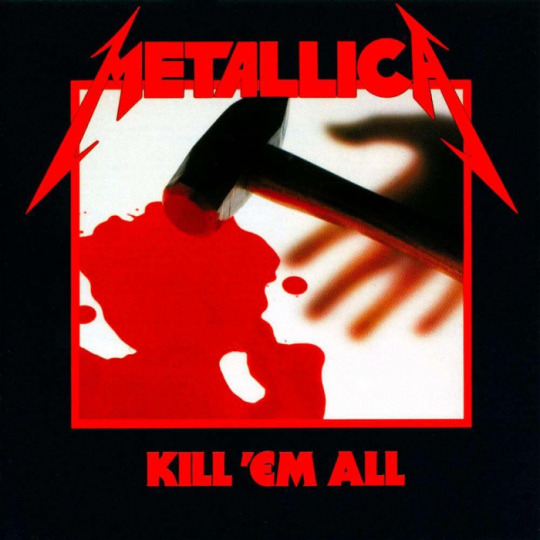
Metallica - Kill ‘Em All Metallica’s debut album, 1983′s Kill ‘Em All, might be their most underrated album, at least as their 80s output is concerned. I love their 80s material, especially 1988′s And Justice For All (don’t worry, I’ll review it, too; I’m reviewing all of their 80s albums in order, starting with this one), but I’ve always thought that their debut is the most underrated out of the bunch. 1986′s Master Of Puppets and 1984′s Ride The Lightning get a lot of love, and for good reason -- they’re both great. I just feel like Kill ‘Em All doesn’t get the same amount of love, but a part of me understands why. Context matters when it comes to certain albums, especially within a band’s discography, and the context with Kill ‘Am All is very interesting. I don’t think I need to talk about it very much, because most fans of Metallica know all about it, but future Megadeth guitarist / frontman Dave Mustaine was part of Metallica in its inception. He helped form the band with James Hetfield, Lars Ulrich, and Cliff Burton, only to be replaced mid-recording by Kirk Hammett, and there was a lot of messy drama that went along with his firing from the band, but a lot of the reason this album is the way it is, well, is because of Mustaine. He helped to write a few songs on this record, and because this was the first thrash album released in the US, it had a huge influence on the burgeoning thrash scene in the US (especially in California, where thrash metal reigned king). The reason I think this album is their most underrated is simply because it’s their debut, and it’s also their most “simplistic” album, at least in terms of the albums people like. I’m not talking about Load, Reload, Death Magnetic, St. Anger, and all that garbage from the 90s and early 00s, but I’m speaking merely within their 80s output (in other words, their peak, although 1991′s The Black Album is pretty solid, too, and that’s more or less a traditional heavy metal / hard-rock album). It’s not the most progressive, ambitious, or unique album, at least when you look at the thrash scene at large. At the time, it was very much of a unique album, since thrash hadn’t taken off here yet, and albums from Slayer,. Testament, Anthrax, and all of those bands wouldn’t release records until later that same year or within the next couple of years. Hell, just a year before this record came out, that’s when The Number Of The Beast by Iron Maiden was released, or Screaming For Vengeance by Judas Priest. That’s what metal was like, mainly comprised of the New Wave Of British Heavy Metal, or bands like Dio (who formed after Ronnie James Dio left Black Sabbath in the early 80s), Black Sabbath, Van Halen, or Motley Crue (hair metal was just starting to come into fruition) were ruling the metal / rock world. Anything “heavier” wasn’t thought of, but bands like Slayer and Metallica would prove that a heavier kind of metal could certainly exist. That’s why I love Kill ‘Em All, since it doesn’t want to be anything more than a kickass thrash / speed metal album. It doesn’t try to be anything else, and it doesn’t want to be anything else, either; songs like “Jump In The Fire,” “Seek & Destroy,” and “Hit The Lights” absolutely rule. They’re in your face, fast, loud, brutal, and best of all, fun. This is such a fun album, but that’s not to say that the rest of their 80s albums aren’t fun, either. They definitely are, but this one is unapologetically fun. Their other albums within their 80s output have more to say, as well as more that they’re trying to do, musically speaking. Ride The Lightning dips its toes in more progressive textures, longer song lengths, and more unorthodox song structures. Master Of Puppets really leans into that, but also making one of the best metal albums in the process. And Justice For All goes for broke and has a really weird sound (not just for it having no bass at all, but we’ll get to that one later), yet it still manages to be a kickass progressive-ish thrash record. Kill ‘Em All, however, is just loud and fast, nothing more and nothing less, but I love it for that. At 51 minutes, it’s a nice burst of thrash / speed metal that will definitely get you pumped, and with that said, if you haven’t heard this album yet, I’d say go for it. It’s my personal second favorite album from them, even if I can acknowledge it’s not their best album, and in fact, it’s easily the weakest of their 80s material, but I still gravitate to this one all the time. I always listen to this one, because it’s the most accessible and the most fun to listen to. When I think of thrash, this is the perfect album that comes to mind, even though Master Of Puppets and Ride The Lightning do, too, this is just unapologetically catchy, heavy, and fun for all the best reasons.
#metallica#kill 'em all#metal#thrash metal#heavy metal#master of puppets#ride the lightning#and justice for all#seek & destroy#metal militia#jump in the fire#van halen#motley crue#slayer#megadeth#james hetfield#dave mustaine#anthrax
3 notes
·
View notes
Text
Listed: Colin Fisher

Photo by ilyse krivel
Toronto-based multi-instrumentalist Colin Fisher is on a constant quest for the ecstatic through sound. His journey has taken him in many directions, from the math-rock inspired group Sing That Yell That Spell, to the fiery free improvisation duo Not the Wind, Not the Flag. As a band leader, his free jazz quartet released the white-hot Living Midnight for Astral Spirits in 2020, about which Derek Taylor wrote, “Passages of ruminant restraint alternate with excoriating blasts and outbursts, but the means always remains intelligible and momentum driven whether full-steam or incremental.” Solo, Fisher has recently wafted in a more contemplative direction that might see him associated with the new age revival, but this work is as exploratory and engaging as his most spirited improvisational outings. Here, he lists some of the pieces within which he experiences the sublime.
Jean-Pierre Leguay — Chant d’Airain
youtube
Some of my first experiences with the sublime in music were in church. I abhorred being in church (and would even attempt to hide to avoid attendance) but at the end of service the organist played as the congregation filed out. The selections were usually secular and I can remember my rapt attention. Not because of some aesthetic taste but because I was having a physical/biological response to the sounds. Being in the resonant chamber of the cathedral provided a fully immersive experience. Rather than suggest whatever music was being played at the time I’m going to fast forward to my mid 20s… While in the same church, I heard the principal organist of Notre Dame improvise with some Messiaen-symmetrical ideas that lifted me out of my corporeal form and left me sobbing in a church pew at the very church I would have done everything in my power not to be present in as a child. The organist was Jean-Pierre Leguay.
Ravi Shankar — At Monterey Pop
youtube
An early transmission from what seemed like outer space at the time, as a young child I heard the sounds of Ravi Shankar and Alla Rakha live at Monterey Pop (my parents had this and the record with Yehudi Menuhin.) Ravi is far from my fav Hindustani musician or sitarist, of which I have innumerable favorites now. But I’m particularly enamored with Vilayat Khan after reading his biography, The Sixth String of Vilayat Khan, a couple of years ago. Pandit Pran Nath is also a huge inspiration.
Polvo — Cor-Crane Secret
youtube
Without sifting through the rubble of my punk/hardcore teens (which was totally legit inspirational beauty, from Minor Threat and straight edge to grunge, etc.) I want to highlight a band that literally changed my life in my mid to late teens. When I first heard Cor-Crane Secret by Polvo, I didn’t realize that music like this existed. It gave me permission to go on long wonky improvisational explorations — endless melodies and whammied chords that would go on for hours sometimes. I also got to see them on the Today’s Active Lifestyles tour when I was 18, totally life changing.
Ornette Coleman — The Shape of Jazz to Come
youtube
The next stage I’ll focus on has a little more girth: my introduction to jazz/free jazz/improv/fusion. I think I first discovered this music by accident. I remember seeing a clip of Monk on the news the day he died. I was much younger, and I thought to myself “this music is like an alien transmission!” But I put that away in the vaults for a couple of decades. I also remember seeing a clip on TV of a soprano player at a jazz fest in Toronto, playing the craziest shit I’d ever heard (once again on a news program,) but had little-to-no context. The clip lasted probably 10 seconds but felt longer and I remember thinking something like “this is more punk rock than punk rock!” hahaha. So, there was a hunger there that I needed to satiate. But I had no access to any recordings where I lived. I remember reading books at the library about jazz history and the only CDs I could borrow were Manteca or big band music. I had to imagine what Song X sounded like for the time being. Ornette’s The Shape of Jazz to Come was one of the first albums I actually bought, and it was more magical than any description could possibly illustrate. As pedestrian as this may seem to everyone now, it was another life changer for me. I can remember late nights sitting by myself, probably super high on good weed, listening to “Lonely Woman” and weeping.
John McLaughlin — Extrapolation
youtube
In my early days of discovering jazz, I also came across the music of John Mclaughlin, initially via Mahavishnu Orchestra. His whole profile as a guitarist was incredibly inspiring for me — someone who had an equal footing in jazz, Flamenco, Indian classical music and fusion — a model for what I could become as a player (although I don’t think our styles are really even that comparable.) One of his albums that I think is maybe overlooked in his career is Extrapolation which has an incredible lineup and the compositions are incredible.
John Coltrane — Interstellar Space
youtube
In considering this list I’m realizing there’s no way I can touch on all the music that has shaped me. But there is an album that’s shaped a great deal in terms of how I play and in what seems to be my favorite type of collaborative setting — the duo. Interstellar Space is an absolute masterpiece. Everything feels raw — the intensity, the interplay, the emotion. As much as I love so much of John Coltrane’s music, there’s something about this record that was akin to hearing punk music for the first time. There’s an immediacy to expression and interaction. And it was something that felt available to me (certainly not his virtuoso chops, which felt otherworldly — an unscalable monolith.) The direct communication between two people was a revelation and the content of this music felt like something I could mine for the rest of my life.
The Ivo Perelman Trio — “Cantilena”
youtube
Fast-forward another few years or more and I had travelled with some good friends to NYC for I think it was the JVC Jazz Fest. We wanted to see MMW play (of whom I still think Friday Afternoon In the Universe is a perfect album.) While we were there though, we saw so much beautiful music that blew me away. The most significant for me though, was catching the last 10 minutes of a set by the Ivo Perelman trio in Tribeca somewhere (the trio was with Jay Rosen on drums and Dominic Duval on bass, who I played with several years later. RIP). It was electrifying. I was moved enough to go and talk to him after and he gave me an unmarked demo tape of Seeds, Vision and Counterpoint. There’s a track on the album called “Cantilena” and it really drops into this heavy space for around 10 minutes that gives me the chills every time I hear it. There is this free lyricism that is still absolutely elating to me. I love his playing and he’s still probably my favorite living saxophonist.
Marilyn Crispell — Vignettes
youtube
Masabumi Kikuchi — Out of Bounds
youtube
Using lyricism as a segue it brings me to the music of Marilyn Crispell, especially her albums Amaryllis,Nothing Ever Was Anyway, Vignettes and many others. She has a mode of free ballad playing that is absolutely transcendental. I will also mention Masabumi Kikuchi in the same breath. I find the desire more and more to play with a similar intention even though I rarely find myself in the context to do so.
Jute Gyte — Birefringence
youtube
A total shift from this narrative of discovery and development is metal music. Something I’d been listening to since my teens and getting hip to some cool thrash music through Canadian band Voivod, particularly the album Dimension Hatröss. I've continued to follow the music and all of its various subgenres and have so many favorite picks, but I’ll choose just one and it’s a total mindbender. Jute Gyte’s Birefringence actually eclipses easy category and you really just need to experience it.
Giacinto Scelsi — “Uaxuctum”
youtube
Catherine Christer Hennix — “Blues Alif Lam Mim In The Modes Of Rag Infinity/Rag Cosmosis”
youtube
My last pick is another double pick (I know I’m cheating) because it relates to the power of music and ties it into the first selection. Another current, among many, of musical obsessions is “new music.” But when I heard Giacinto Scelsi’s music for the first time it surpassed all of my previous notions about what was possible with composed music — it felt like music from an ecstatic vision. Even as I listen to the track now, it immediately accesses some occult realm of sublimity that feels similar to the music I first heard in church but with an unbridled intensity and depth.
Another more recent selection that fits into this category — but that is different in that it embraces a sort of stasis rather than dynamic movement — is the music of Catherine Christer Hennix. If you don’t know her, she’s a deep well of musical/mathematical/spiritual inspiration for me. Another music without a real equivalent in this day and age — something that echoes ancestral currents as well as the vibration of the cosmos itself. Thanks for reading/listening. Peace be with you. xoxo
#dusted magazine#listed#colin fisher#Jean-Pierre Leguay#ravi shankar#polvo#ornette coleman#john mclaughlin#john coltrane#ivo perelman#marilyn crispell#masabumi kikuchi#jute gyte#giacinto scelsi#catherine christer hennix
12 notes
·
View notes
Text
TOP 20 ROCK/METAL ALBUMS OF 2018
This has been a year of surprises and disappointments in pretty equal measure. Judas Priest blew me away with their latest record (and tour) and Immortal made one of the most triumphant comebacks in metal history. On the other hand, Voivod’s new one felt strangely by-the-numbers, as did the latest from Riot V and Monster Magnet. Still, the sheer amount of releases out there, just in the traditional metal and thrash scenes, is somewhat mind-boggling, and there were plenty of excellent albums to be found.
(Countries represented this year: Italy, UK, Sweden, Norway, Germany, USA, Canada, Switzerland, Portugal, and Denmark).
20. BURNING WITCHES - Hexenhammer
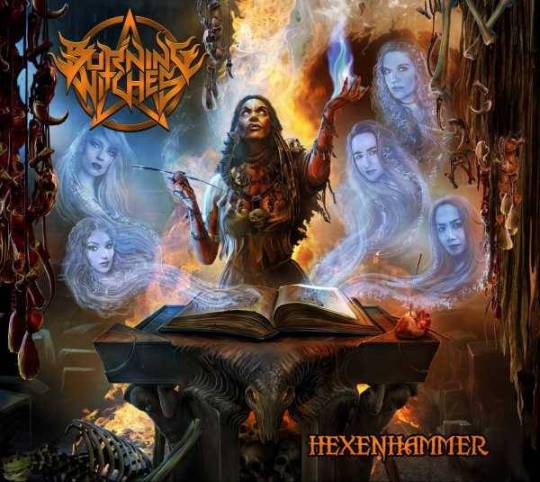
Switzerland is a tiny nation, but they have given the world some of the most creative and diverse bands over the years, from Krokus to Celtic Frost to Samael and beyond. Burning Witches combine elements of melodic thrash and classic heavy metal for a sound that works quite well and is perfectly suited to Seraina Telli’s powerful vocal delivery. The album has its ups and downs but the title track and “Open Your Mind” are both flat-out brilliant.
19. PERPETRATÖR - Altered Beast

This is how I like my thrash metal: fast, evil, dirty, but still well-played and composed. Perpetratör hail from Portugal and this is only their second full album, but it is a scorcher. Songs like “Extreme Barbarity” and “Terminal Possession” are brutally fast in the vein of the early Germans, but the band explore some more mid-tempo riffs here and there as well. Like all my favorite thrash bands, these guys sound like they are playing just on the edge of what they can get away with and the effect is electric.
18. ARTILLERY - The Face of Fear
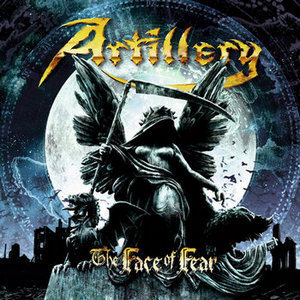
These Danish thrashers are one of those bands that has always had consistently quality releases but, for whatever reason, never really made the impact others in the genre have over the years. While the line-up has changed over time, the current incarnation has done three albums together now and sounds quite comfortable here. The drum sound is a bit ‘bonky’ for my tastes, but the quality of the tunes rises above it. Bonus points for the variety of songs on offer, too, from speedy, complex thrash, to power ballads to straight-ahead heavy metal.
17. LUCIFER - II
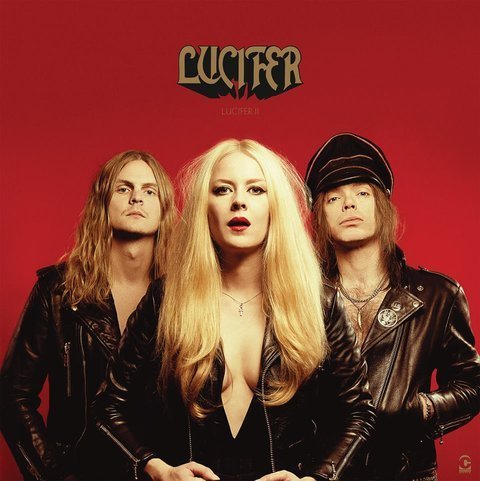
Lucifer’s brand of retro doom rock is both obvious in its influences and original in its assembly of said influences. The jazzier side of early Sabbath is the most prevalent element at work here, with riffs that range from heavy and evil to mournful and atmospheric. Despite some line-up changes, the sound is pretty consistent with the excellent debut from 2015, with perhaps a bit more clarity in the production (though nowhere near polished-sounding, fear not).
16. WITCHING HOUR - ...And Silent Grief Shadows the Passing Moon
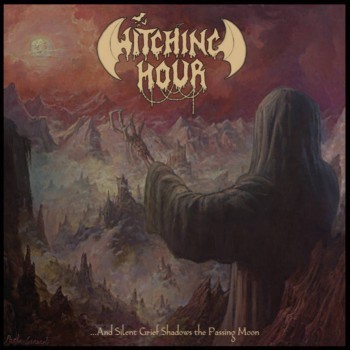
The number of excellent bands with ‘witch’ in their name is strangely high this year and Germany’s Witching Hour are another to add to that list. This is their third full-length and displays a great deal of maturity and talent for writing complex yet compelling songs. Elements of black and thrash metal abound, but there is a lot of other stuff going on here, too, and lots of melody. The bass playing is particularly impressive and really adds a whole extra dimension to the music, while the vocals are a potent mix of plaintive and grim and complement the dark, intricate songs beautifully. This was a late-year release and, given some more spins, it will likely rise on this list.
15. SATAN - Cruel Magic
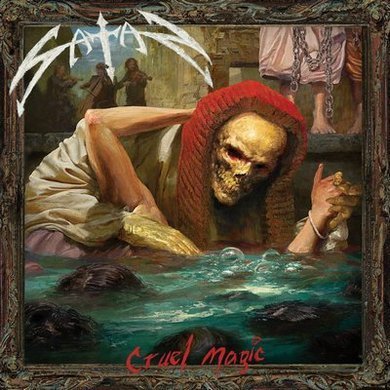
It is rare that a band can pull together their classic line-up the way that Satan did in 2013, let alone one that can then proceed to release three albums back-to-back that fall right in line with their old material. Cruel Magic is the latest of these and has all the hallmarks that made Satan great: finely-crafted heavy metal that is speedy and complex, organic production, and an overall sound that is truly their own. They may have only caught the tail-end of the NWOBHM but damn if they weren’t one of the scene’s best and it is heart-warming to see and hear them continuing the legacy 35 years later.
14. ABYSMAL GRIEF - Blasphema Secta
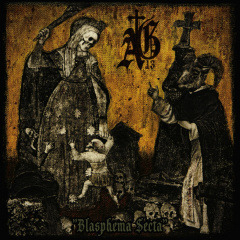
Abysmal Grief are Italian doom masters that create a sound that is heavy, gothic, creepy, and relentless all at once. Most songs are in the 8-9 minute range and are usually centered around a few core riffs, but the way the band build them up and vary them throughout really pulls the listener in. Keyboards are used quite a bit and to great effect, while the vocals range from mournful to menacing. The band has kept a very consistent style since day one, with only the production getting a little better with each release, and Blasphema Secta sounds both heavier and cleaner than anything prior.
13. STRIKER - Play to Win
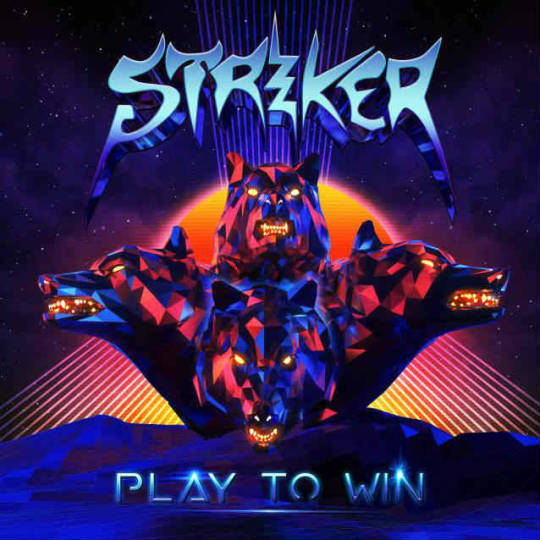
Been following these stalwart Canucks since their debut EP a decade ago and I’m glad to see that they have continued to evolve and refine their sound with each new album. Play to Win is probably the most ‘commercial’ release to date, with tons of melody and big choruses, but there is still plenty of heaviness on tracks like “Heart of Lies” and “Summoner” to keep a nice balance. Striker has gotten really good at writing distinctive songs that aren’t just a collection of riffs but actual, well-constructed tunes.
12. BULLET - Dust to Gold
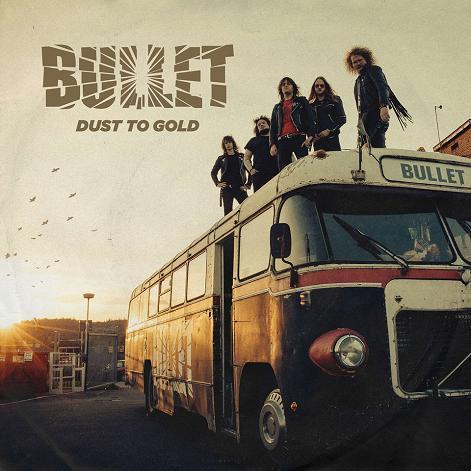
This Swedish quintet has been bashing it out for 15+ years and still manages to release an invigorating collection of hard rockin’ metal tunes. Stylistically, Dust to Gold covers a fair amount of ground, from heavy metal in the vein of Accept and Grave Digger to more upbeat rockers ala Krokus and AC/DC. The common denominator throughout is a sense of fun that is missing from entirely too many albums these days.
11. LEATHER - II
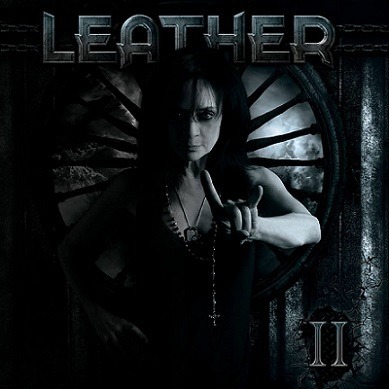
Leather’s powerful voice was always the thing that raised Chastain from a good band to a great one and I’m pleased to report that she sounds just as good in 2018 as she did in 1988. The opening track “Juggernaut” is one of the best speed metal songs I have heard in a while and the rest of the album is consistently good, too. Shades of Dio and Priest color the wide range of tunes here and the band turn in some excellent, spirited performances. Glad to see Leather back on the scene and, as much as I enjoyed the Chastain reunion records, I think this one is even better.
10. HAUNT - Burst Into Flame
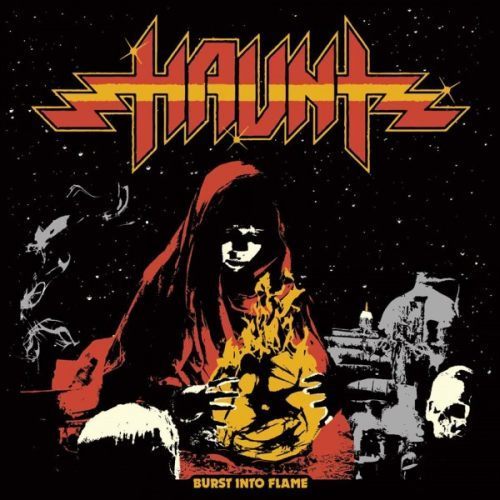
Although I enjoyed the first Haunt EP, the full-length debut really takes it up a notch. This is classic, old-school heavy metal that reminds me a bit of the first couple of Cauldron albums, with some wonderful dual-guitar work thrown in for good measure. The vocals are clean but remarkably restrained compared to some of the screamers out there, making for a nice change of pace. Songs “Reflectors” and “Burst Into Flame” have a haunting (ahem) timelessness to them and the album flows really well from start to finish.
9. THE NIGHT FLIGHT ORCHESTRA - Sometimes the World Ain't Enough
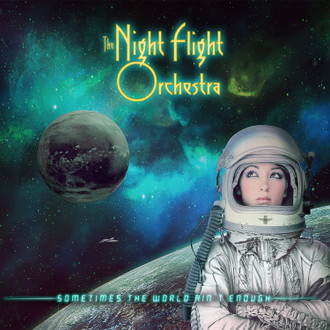
Despite featuring members of Soilwork and Arch Enemy, this is a long, long way from death metal, melodic or otherwise. Although the band’s first effort had a distinctly late-70s hard rock vibe to it, each record since has taken the listener deeper into the world of 80s AOR. Unlike a lot of the sterile, radio-friendly acts from that actual era, NFO bring a warmth and heartfelt approach that really brings the music alive. This is the band’s fourth album and probably their weakest, but it still stands well above the average album of 2018. Songs like “Turn To Miami” and “Pretty Thing Closing In” are immediate, timeless classics.
8. THE CROWN - Cobra Speed Venom

Although Deathrace King is still one of my top 5 death metal records of all time, The Crown never really were able to duplicate its genius. Cobra Speed Venom, however, comes damn close. It has all the brutality that the band is known for but brings back a lot of the punky/thrash energy and memorable riffs that have been missing for a while. The first three songs might be the best start to any album this year; just relentless, mayhemic brilliance. Top it off with one of the coolest and most original album covers I’ve seen in a while, along with three bonus tracks that are actually worth adding, and you have one hell of a return to form.
7. SAXON - Thunderbolt
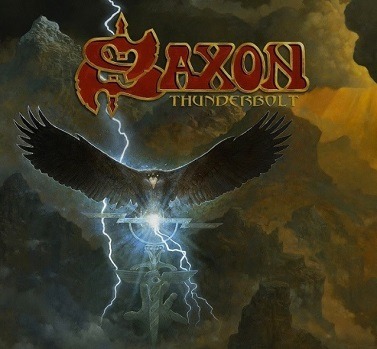
Saxon certainly made some missteps in the late 80s, but I can’t think of another band that has remained as true to form over the years, while also consistently putting out quality albums and touring relentlessly. Thunderbolt is no Wheels of Steel or even Call To Arms, but it is still a solid record that is as good or better than the last couple. From the melodic timelessness of “The Secret of Flight” to the moody “Nosferatu (The Vampire’s Waltz)” to the raging “They Played Rock and Roll,” there is also a diversity rivaled only by Priest on this list.
6. BLACK OATH - Behold the Abyss
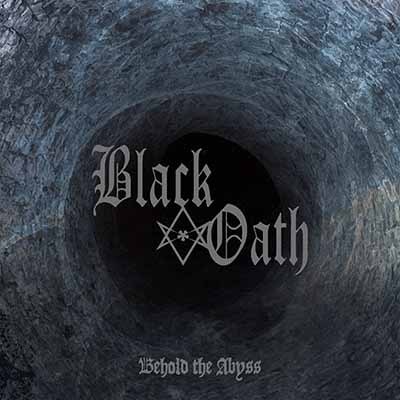
When it comes to true, epic, soul-crushing doom metal, Black Oath have become true masters. I have been following this band since the Portrait of the Dead single back in 2010 and am pleased to say they just keep going from strength to strength. Behold the Abyss balances a lush production, clean vocals, and plenty of melody, with dreadnought riffage and blissfully dark, esoteric lyrics. A rich, dynamic work of black art.
5. SIGN OF THE JACKAL - Breaking the Spell
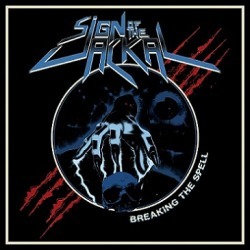
This amazing Italian band has created a style that is equal parts early 80s Warlock and late 80s Judas Priest. Great, driving metal tunes that sometimes border on speed metal with plenty of screaming solos and hooky choruses. The recording, the mix, the energy, everything about this record is incredibly old-school and authentic, right down to the 32-minute running time.
4. AUDREY HORNE - Blackout
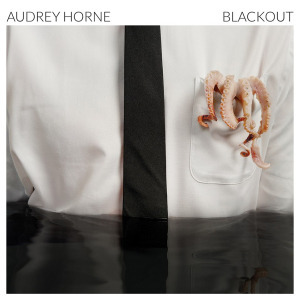
Ever since these Norwegian rockers abandoned all pretense and went full-on retro with their Youngblood album, I have been hooked. They compose hard-hitting rock tunes with tons of hooks and Lizzy-esque harmonies that give a nod to metal and punk without really being either. The first three songs - “This is War,” “Audrevolution,” and “Blackout” - are all perfectly built and give a great cross-section of the band’s diverse sound. Toschie’s vocals are as unique as his fashion sense and, as much as I loved the last two records, I think this one may be their best yet.
3. BRAINSTORM - Midnight Ghost
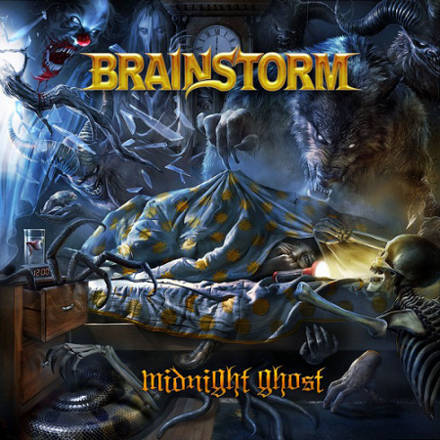
Brainstorm has long since perfected their style (as far back as Soul Temptation, some fifteen years ago), and each new release is really just varying levels of execution. As good as Scary Creatures was a couple years back, Midnight Ghost is truly brilliant and may possibly take the title as my favorite Brainstorm outing. All of the usual plusses are in place - great production, top-notch musicianship, catchy tunes - but the songs themselves are just a tad bit more finely honed and memorable. “Ravenous Minds” and “When Pain Becomes Real” in particular are killer and there is nary a dull moment here.
2. IMMORTAL - Northern Chaos Gods
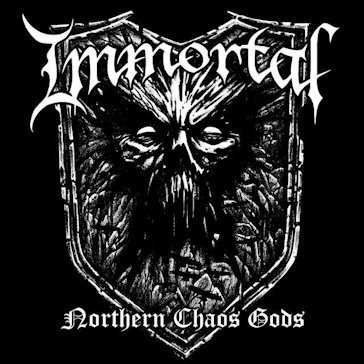
My first Immortal record was At the Heart of Winter and it is still my favorite black metal album, hands down. The combination of raw, icy riffs with the mind-blowing drumming and just enough melody to keep it all together was/is intoxicating. Immortal has never done a bad album, but some are definitely better than others and Northern Chaos Gods is one of the best ones. The ferocity is up there with Pure Holocaust and Demonaz’s vocals, while not quite as distinctive as Abbath’s, fit the music perfectly. The band wisely took their time to put this record together and the results speak for themselves.
1. JUDAS PRIEST - Firepower
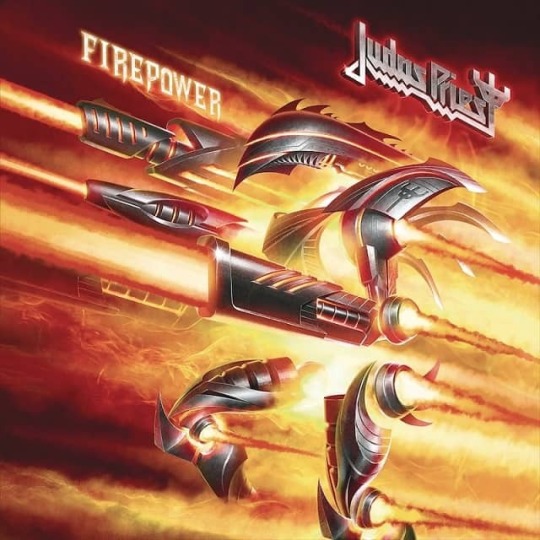
Priest has been one of my favorite metal bands since I first got into them back in ’82 and they are still right up there with Sabbath, Accept, and Mercyful Fate, with a catalog that is as diverse as it is brilliant. After the disappointing Nostradamus and good-but-not-great Redeemer of Souls, it was a real pleasure to hear Firepower, a true, all-guns-blazing Priest record. The production is 1000% better than anything they have released in the last two decades and the material is both diverse and top-notch. Songs like “Firepower,” “Never the Heroes,” “Children of the Sun,” and “No Surrender” have such a classic sound to them and Rob has not sounded this good since Painkiller. Even the weakest tracks (“Lone Wolf” and “Sea of Red”) have grown on me a bit, so I am confident that Firepower will go down in history as one of the band’s crowning achievements.
I must also mention some very impressive EPs, demos, and singles that were released this year, namely those from CIRITH UNGOL, ROUGH SPELLS, ÜLTRA RAPTÖR, PULVER, SIGNIFICANT POINT, TENTATION, ANCIENT SÉANCE, SABÏRE, and OCCULT BURIAL. If you aren’t familiar with any of these bands or haven’t heard their latest, I highly recommend getting acquainted immediately.
As usual, my list could have gone on much longer, but here are the bands that just missed the top 20: AMORPHIS, AURA NOIR, BEHEMOTH, BLACK REBEL MOTORCYCLE CLUB, BLACK VIPER, BLADE KILLER, CAULDRON, DIMMU BORGIR, DREAM CHILD, GOAT WORSHIP, GRAHAM BONNETT BAND, IRON ANGEL, KHEMMIS, KRISIUN, NIGHT VIPER, PRIMAL FEAR, PROFESSOR BLACK, RIOT V, SABOTER, SKULL FIST, SUBSTRATUM, TAD MOROSE, VISIONS OF ATLANTIS, VULCAIN, WHITE WIZZARD, WITCHFYRE, and WYTCH HAZEL.
What is on the horizon for 2019? Well, I am already psyched about the new ones from CANDLEMASS, DELAIN, ROCK GODDESS, FLOTSAM & JETSAM, CHAINBREAKER, SOILWORK, WITHIN TEMPTATION, MORTAL SCEPTER, HAMMERFALL, and TYTUS, plus possible releases from SACRED REICH, DEATH ANGEL, and EXCITER all have me really looking forward to the coming twelve months. The world is crumbling around us, but at least the metal scene is stronger than ever!
#best of 2018#judas priest#immortal#brainstorm#audrey horne#sign of the jackal#black oath#saxon#the crown#the night flight orchestra#haunt#leather#bullet#striker#abysmal grief#satan#witching hour#lucifer#artillery#perpetrator#burning witches
8 notes
·
View notes
Text
Behind The Album: Death Magnetic
Metallica‘s ninth studio album was released in September 2008 through Warner Bros. Records as the previous deal with Elektra had run out with St. Anger. The album would be produced by Rick Rubin, which marked the first time any producer besides Bob Rock had worked with the band since 1988. This also marked the first album to feature new bassist Robert Trujillo, who would share songwriting credit on the record. Death Magnetic would signal a return by the band to their thrash metal origins during the 1980’s. This meant that the arrangements became complex once again, guitar solos returned, standard mixing, and no bizarre tunings. The group began jamming in early 2004 coming up with possible new riffs for a potential new release. By October, they had more than 50 hours of sessions on tape to comb through in order to find music for a new record. They had hoped to start the album sometime in 2005, but they did not actually start writing it until early 2006. Lars Ulrich said that year the progress was going well as the band did not have anything close to the same issues as in St. Anger. As far as the music goes, he assured everyone that this would not be a sequel to that album. Three recording studios were used to make death Magnetic including Sound City in Los Angeles, Shangri-La in Malibu, and HQ in San Rafael. Please note that Shangri-La is Rubin’s home studio, which had been previously used by The Band to make their self titled classic. In interviews, band members commented on the fact that they were making this album much differently in that everything would be completely written before they even entered the studio. One of the issues with St. Anger was that everything had been created there right on the spot, which helps to explain some of the messiness. Lars would say in an interview, "Rubin didn't want them to start the recording process until every song that they were going to record was as close to 100 percent as possible." He would also go on to say that, “His whole analogy is, the recording process becomes more like a gig — just going in and playing and leaving all the thinking at the door.”
Metallica would record 14 songs for Death Magnetic, but only 10 would make it on the official release as most of the tracks were quite long in duration. Three years later in 2011 they would release the unreleased songs on an EP entitled Beyond Magnetic. Compared to the last album, the recording sessions for the most part seemed exceedingly brief from mid-March 2007 to late May 2007. Kirk Hammett had a part in inspiring a major theme of the album that became the brain child of James Hetfield. He had once brought in a photograph of Layne Staley from Alice In Chains that Hetfield became almost obsessed with over the years. The singer would later make this comment on the origin of the title. “Death Magnetic, at least the title, to me started out as kind of a tribute to people that have fallen in our business, like Layne Staley and a lot of the people that have died, basically — rock and roll martyrs of sorts. And then it kind of grew from there, thinking about death… some people are drawn towards it, and just like a magnet, and other people are afraid of it and push. Also the concept that we're all gonna die sometimes is over-talked about and then a lot of times never talked about — no one wants to bring it up; it's the big white elephant in the living room. But we all have to deal with it at some point.” The other title that had been considered along with a couple of others was Songs of Suicide and Forgiveness, but for the most part it was decided that Death Magnetic had a better ring to it. The album title would be referenced in the song “My Apocalypse.” The song sounded so heavy to Hetfield that during live performances he even recorded an introduction to the song to get fans in the mood for what they were about to hear. The entire record would take a look at this theme of death. The one track that could almost be considered their usual ballad is represented by “The Day That Should Never Be.” They also created another sequel to the track “Unforgiven” making it number III.
The album would be released 10 days ahead of its worldwide date in France. This led to another early release date in the United Kingdom. The incredible thing came in the fact that Lars Ulrich was not all that upset about the early releases, which had led to peer to peer networks getting a hold of the album early. This emerged as a stark contrast to just a few years earlier when he waged a personal battle against Napster. “We're ten days from release. I mean, from here, we're golden. If this thing leaks all over the world today or tomorrow, happy days. Happy days. Trust me. Ten days out and it hasn't fallen off the truck yet? Everybody's happy. It's 2008 and it's part of how it is these days, so it's fine. We're happy.” An agency that worked with Lars Ulrich would design the cover because he wanted someone who really did not have anything to do with the music industry. The firm came up with the idea for a white coffin, a white grave, and a magnet keeping it relatively simple. The album was also released as part of a download package for the game Guitar Hero. This became a very important issue as the mixing of the album came under heavy scrutiny. Upon its release, Death Magnetic was heavily criticized from many fans for its poor sound quality as it possessed massively compressed dynamic ranges, which in turn created distortion when listening to it. The group had turned over all mixing duties to Rubin, which really created this issue. The distortion came about because at the time audio companies were waging a loudness war with each other, so the reason for the compression came in that it made an album louder on your headphones. Some fans said that the downloads on the Guitar Hero game did not have this compression, so those tracks sounded as they should. In 2015, iTunes re-released the album fixing the noise distortion qualities from the original release. Metallica‘s site also currently uses the same version on their website for any downloads purchased, which begs the question why they did not do this much earlier. Lars Ulrich would comment that he was satisfied with the mix at that time. They had given up all creative control on that end to Rubin and trusted him.
The critics for this album were incredibly positive in part because there existed a lot of hype leading up to its release, as well as the fact that improving upon St. Anger would not be all that difficult. In 2007, Matt Sorum of Guns N’ Roses talked about the demos that he had heard while spending time with Ulrich. “Lars is a good friend of mine. He played me the demos from San Francisco, and I turned and looked at him and I said, 'Master that shit and put it out.' It's ridiculous. The demos were sick. Eight-minute songs, all these tempo changes, crazy fast.” BBC Music likened “ The Day That Never Comes” to sounding like Thin Lizzy, but having a complex arrangement to it that reminded him of And Justice For All. Drummer Mike Portnoy of Dream Theater would call it Metallica’s best album in 20 years. He also praised the fact that the group included their first instrumental in a very long time. Stephen Erlywine of All Music would write that it was nice to hear Metallica sound like Metallica again. The Observer said "...It’s a joy to have these gnarled veterans back to reinforce the sheer visceral thrill of timeless heavy metal." The album sold 490,000 copies in its first week helping it to rise to number one on the Billboard 200 charts. Death Magnetic would go on to be certified two times platinum when everything was said and done. Metallica would be nominated for six Grammys for the record and take home three the following year.
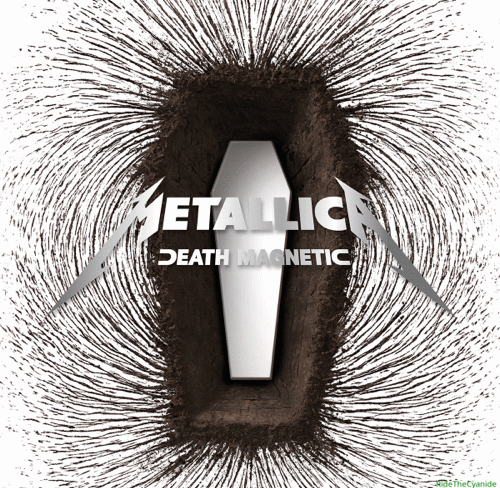
0 notes
Text

Battle #10
Beastie Boys: Licensed To Ill ( Side 1 )
Vs.
Slade: Rogues Gallery ( Side 2 )
Beastie Boys: Licensed To Ill ( Side 1 )
The Beastie Boys were an American hip hop group from New York City formed in 1981. The group was composed of Michael "Mike D" Diamond (vocals, drums), Adam "MCA" Yauch (vocals, bass) and Adam "Ad-Rock" Horovitz (vocals, guitar, programming). Originally The Beastie Boys were formed as a four-piece hardcore punk band, the Young Aborigines, in 1978 by Mike D (vocals), MCA (bass), John Berry (guitar) and Kate Schellenbach (drums). The6 were on a thrash hardcore and metal comp, but achieved local success with the 1983 experimental hip hop single "Cooky Puss", and soon after, the Beastie Boys made a full transition to hip hop. I would say it’s a decision that definitely was in their favor. It’s a case for “the right place at the right time”. Hip Hop was exploding in NYC in the early 80s and by the time the mainstream came around, these 3 white guys could hold their own in a predominantly black genre. I don’t mean that to sound racist, but it was quite rare to see any white rappers, let alone rappers at all on MTV. That all changed in 1986 when acts like Run DMC, Kool Moe D, and LL Cool J were smashing stereotypes and combining rock riffs and samples with sick rhymes and showing the masses a new medium. And these beastie boys were paying attention. When this album came out, it didn’t take long for it to begin charting. Blistering hits like “Rhymin’ and Stealin’” with it’s crushing tempo and vocals in the round ( which would become the Beasties classic signature style). Strangely pirate themed as well. “The New Style” describes exactly what all of this set up was about and the samples are very ample for example (#seewhatididthere) nice switch up with the “ummmmm DROP!” Centering around the classic Zeppelin riff is “She’s Crafty” followed quickly by “Posse in effect” - a tale about being a cool dude with a big crew- very important for the 80s. They have a rhyme with Abe Vigota in this one (Godfather reference surely) for crying out loud!!! “Slow ride” has another badass switch up and “Girls” (a beasties classic subject : laydeeeeees) is just an awesome song. The latter being the most formulated of all of their songs. Very standard rhythm and rhymes. As if this album couldn’t get any better, the next song, and essentially the launch pad for their entire career is “Fight For Your Right”. It sounds political, but rest assured it’s a cause you want to join. This song became an anthem for every teenager and college kid in 1986-87 (and continues through today, really) and between the radio airplay and video presence on MTV, you couldn’t escape the beastly power (#seewhatididthere) they had unleashed. Who doesn’t know that chord ringing out followed by “Kick it!” I love that it’s buried on the A side too. The record company executives missed that one! And that’s just Side One! The flip has equally impressive hits like “No Sleep ‘Till Brooklyn” and “Brass Monkey”. A virtual hit machine! What you have to understand is just how groundbreaking this album really was though. For the time it really was light years ahead and the fact they could actually play their instruments paid off well on later releases which nod to their roots. They were truly innovative and master craftsmen at carving out a niche in a newly developing genre. Iconic is an understatement. Fun facts : the tail of the plane says “eat me” backwards.
Slade: Rogues Gallery ( Side 2 )
Slade are an English rock band from Wolverhampton and they rose to prominence during the glam rock era in the early 1970s. You know, Ziggy Stardust and all...they achieved 17 consecutive top 20 hits (!) and six number ones on the UK Singles Chart. The British Hit Singles & Albums names them the most successful British group of the 1970s based on sales of singles. That’s there...in the U. S. they are a bit more obscure, but you would instantly recognize tunes like "Mama Weer All Crazee Now" and “Cum On Feel The Noize” - more famously (stateside anyway) done by Quiet Riot. Sorry. Not their song. It belongs to these Glam rock champs of the early 70s. In fact, Slade Alive and Slayed? are considered two of the greatest glam rock albums ever. They really were equally well known for their outlandish outfits and I have no idea what the misspelling is all about, but it runs rampant throughout their early catalog. The rise and fall (and eventual rise again) of Slade is an interesting one. They were doing quite well, charting and finding success in the U. K. But were disappointed that they were not achieving notoriety in the U. S. So they did what any band would’ve done and they moved to the U.S. and basically started over from the ground up. They did so for about 3 yearsbut to no avail. They just didn’t chart or have much interest here. So they went back home...only to find that Punk Rock had taken over the airwaves in 1977. This led to further “failures” by not charting or keeping relevant...it also didn’t help that they kind of alienated their existing fans by moving to the USA. Poor Slade. But wait! There’s more! Right around the punk rock phase there was also an onslaught of British Heavy Metal, and Slade picked up their battle axes and went to war. By the apex of the heavy metal invasion, Quiet Riot had released their version of the aforementioned earlier Slade hit. This coupled with the band finally getting the recognition they deserved caused the labels to take notice and sign them. Their first single to reach American charting was “Run Runaway” which saw extensive airplay on MTV. The band had finally come full circle. The roller coaster continues from that point up and down and they faded and were rediscovered several times between then and now, and they’re still active! This is a band that’s been playing since 1969!!!! I think that just Slade is Crazee now!! (#seewhatididthere). So this is their 12th album, 1985’s Rogues Gallery. It contains the minor hit “7 Year Bitch” which makes me think that someone did them wrong. It’s a poppy mid tempo tune, but as you can guess, not terribly friendly. “I’ll be There” is not a Jackson’s cover and is in fact, VERY Irish sounding. A lot of Scottish flair on this one...like there might as well be bagpipes! A bigger sound and some harmonies too. Not to far removed from a current act like Mumford and Sons honestly. Too looooooooooong though. Trim it!! “I Win, You Lose” has an emphatic and orchestrated feel. Some of the rock seems to have vacated in these earlier tunes. Big solos but still lackluster somewhat. I think we lose... “Lock Up Your Daughters” has to be a barn burner with a title like that, right? Well, it is. Finally, THERE are those A/C D/C riffs we all love so much! This one shreds and it’s tight and treacherous (just like your daughter! OH! #seewhatididthere (Sorry...too far?)) *ahem* “Time to Rock” is another return to form with stadium shaking beats (come on this is a group that practically invented these kind of songs!!) BIIIIG sounds, THIS is Slade! Whistle-core outtro is a bit strange. A Rogues Gallery of sounds mayhaps? And a sidebar: These dudes seem quite fond of hats. They remind me of a more rock oriented Big Country on this one. Other Slade albums are better, and this is right in the middle of their mellowed out phase.
So The Beastie Boys may be licensed to Ill, but the only thing that is sick, is their music. (#seewhatididthere) BBs took 23 minutes to burn 151 calories over 7 songs. They burned 21.57 calories per song and 6.57 calories per minute. The6 also earned 16 out of 21 possible stars. Slade came out of retirement with a Rogues Gallery of songs and sounds. They belted out 5 tunes over 21 minutes and burned 132 calories in the process. They burned 26.4 calories per song and 6.29 calories per minute, earning a total of 11 out of 15 possible stars. In today’s battle, the Beastie Boys passed the mic, rhymed AND STOLE (#seewhatididthere) today’s prize.
Beastie Boys : “Fight For Your Right”(Cliche I know, but I HAD to go with this one. You get it all: the rock, the rap, the humor...THIS IS THE FRICKIN’ BEASTIES!!!)
https://youtu.be/eBShN8qT4lk
#Randomrecordworkoutseasonseven
#Randomrecordworkout
#randomrecordworkout#randomrecordworkoutseason7#vinyl#80s#80s music#records#80's music#beastie boys#slade#working out
0 notes
Video
Randy Castillo (December 18, 1950 – March 26, 2002) was best known as Ozzy Osbourne’s #drummer during the mid-1980s to the early 1990s, and later as #drummer for #heavy #metal #band Mötley Crüe, from 1999 to his death from cancer in 2002.



In 1984, Randy was hired to play drums for Lita Ford and was featured on her Dancin’ On The Edge album. Lita introduced Randy to her boyfriend, Mötley Crüe bassist Nikki Sixx, and Nikki’s bandmate Tommy Lee. Shortly after the “Dancin’ on the Edge” tour, Tommy called Randy from a party he was at with Ozzy Osbourne and told him Ozzy was looking for a new drummer. Despite being unable to audition right away due to a broken leg he suffered while skiing, Randy was hired by Ozzy a couple months later and ended up staying with the Ozzy Osbourne band for ten years, recording five albums with Ozzy during that time. These were The Ultimate Sin (1986), No Rest for the Wicked (1988), an EP entitled Just Say Ozzy (1990), No More Tears (1991), and a double-disc live album, Live & Loud (1993).[5]



After recording Ozzy’s live album in 1993, he joined the short-lived Bone Angels, followed by Red Square Black. Castillo also briefly returned to Osbourne’s band in 1995 for a tour, and played drums on several tribute albums during this time. He played with Ronnie James Dio on a cover of Alice Cooper’s “Welcome To My Nightmare” on the Alice Cooper tribute album Humanary Stewand performed all drumming duties on a star-studded Def Leppard tribute album titled Leppardmania. The album featured John Corabi (Angora, The Scream, Mötley Crüe), Paul Shortino (Rough Cutt, Quiet Riot), Kevin DuBrow (Quiet Riot), Joe Leste (Bang Tango), and Jani Lane (Warrant, solo artist), among others. Guitar and bass duties were handled by Jerry Dixon and Erik Turner ofWarrant, and Tracii Guns of L.A. Guns.



In 1999, after Tommy Lee had left Mötley Crüe, Sharon Osbourne called Randy and told him about the job opening. Mötley Crüe gave him the job without an audition.[6] He’d previously briefly played with Vince Neil as a touring drummer for the Vince Neil Band, and was an old friend of the band. His only recording with the band, 2000’s New Tattoo, was somewhat of a return to the classic Mötley Crüe sound. However, fan reaction was mixed and the album was not as successful as the band was hoping it would be. Still, there was excitement over the upcoming tour due to the revival in interest of many ‘80s hard rock acts, and the band geared up for their “Maximum Rock” tour with thrash metal legends Anthrax and Megadeth.

youtube
#randy castillo#ozzy osbourne#heavy metal#metal#on this day#on this date#this day in history#today in metal#hbdy#hbd#hbday#happybday#happybirthday#happy birthday#happy bday#today news#today in history#date today#news today#todaynews#today in the history#today in music#today in music history#this day#this day in music#this day in rock#on this day in history#on this blog#on this website#Happy Birthday
15 notes
·
View notes
Text
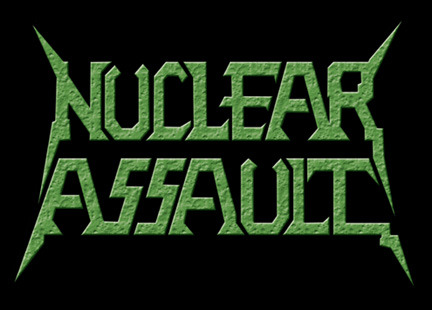
NUCLEAR ASSAULT
Interview with John Connelly by Daniel Hinds
(conducted May 2003)
The melding of hardcore and thrash metal, aka 'crossover,' was the hot ticket back in the mid to late 80s. Bands like the Crumbsuckers, S.O.D., D.R.I., Agnostic Front and The Accused all had ties to both metal and hardcore and managed to really bridge both fan bases. After an early departure from Anthrax, bassist Dan Lilker joined up with three other guys with similar tastes and formed Nuclear Assault, a hard-hitting band that could rock out the most serious political topics one second and then fire off a total goof the next. Speed and concrete heaviness were the foundation, but it was the keen songwriting and human anger that really gave Nuclear Assault its unique voice. Vocalist John Connelly explains the whys and hows of this seemingly unlikely reunion… How's the tour going? Aside from the fact that everyone caught the flu on the warm-up tour, pretty good. (laughs) Yeah, it's novel. That's the difference between traveling in a van and traveling in a tour bus. In a tour bus, you get to watch the flu go from person to person gradually over the course of a week or so. In a van, it kind of hits everyone at once. What made you decide to get back together now? I think just enough time had passed that we were all ready to do this again. Being in a band is kind of like being married to three or four other people. You know how many marriages work out these days - not many. People who stay in a band long enough to do anything, you tend to be talking about some pretty determined people. So after ten or twelve years, everybody's like, we're not getting along well anymore, let's pack it in and shut it down. Enough time had gone by, everybody was ready to get back to work. I read an interview from 1999 where you said there was no chance of a Nuclear Assault reunion, that you just weren't interested in playing that kind of music anymore. I tried a few other things and had a lot of fun with other projects. Unfortunately, this is what I'm really good at writing. I can either do something else half-assed or I can do something well and if I'm going to do anything, I'd rather do it well. How is writing going for the new album? We're having a lot of fun with that. Danny and I were getting together before he moved up to Rochester once a week and it was just like the old days. Back in the day, we'd get together on his front porch and write music over a twelve-pack of Meister-Brau. Except we can afford something a little better now, like Budweiser (laughs). Are you handling the lyrics? More or less I have to. Because I'm singing and playing at the same time, I have to be really conscious of coordinating the two. Some things I cannot do at the same time. I cannot do a really complicated vocal riff while I'm doing a really complicated guitar riff. Or sometimes I can, it depends on the pattern of the picking or how the syllables of the words are laid down. They've got to interlock in a way that is compatible for me to do. So the guys generally leave the lyrics up to me because it's part of the melody situation and they go hand in hand. Will you keep the socio-political bent to the lyrics from the old days? Absolutely. That's always been one of our trademarks. That's a Nuclear thing. Where was the live album [Alive Again] recorded? It's a little complicated. We did a show at a place called Jared's in Massachusetts or Rhode Island, I'm really not exactly sure which state. Apparently there is a thing called adult-onset asthma which I was acquainted with that night. So about an hour before I go on stage, I all of a sudden can't breathe, so the music was recorded then but we couldn't use a lot of the vocal tracks. So those had to be redone at a later date. On the plus side, we did try to keep things as close to reality as possible. The vocal tracks were recorded in one pass, song to song, the same way we do a live gig. At the end of a work day, at the end of a work week, after a four-hour train ride to get to where we were recording. So you had all those same factors going - you had fatigue, you had not stopping and re-recording. Just do the tracks and make it as close to a live recording as you can. Why did you release it on Screaming Ferret? I don't know. (laughs) I honestly don't know. They just showed up and said, 'Hey, we're going to do this,' and we're like, 'Okay.' I can't say much more about that. (laughs) Do you have a label yet for the studio album? Not yet. We still have to do a demo tape and see what if any interest there still is for this kind of stuff. Without sitting down and talking with the other guys, I know there are definitely some people that we DON'T want to work with, because they are the same people who in the past screwed up what we were trying to do. Are you getting a lot of younger kids at the shows or mostly fans from the old days? Right now, we're seeing a lot of older people. Let me rephrase that - right now we're seeing a lot of our contemporaries. (laughs) Young kids, yeah, there are some. For some strange, bizarre reason, that kind of music is coming back wit the kids these days. They are going back and discovering where the nu-metal bands got their influences from. It's more prevalent over in Europe, but it seems the crowds in Europe have always been more open-minded and aggressive in listening to stuff. In America, I hate to say this, the kids I see at shows when I work as a bouncer or tour with other bands, they don't know anything. Their knowledge doesn't go much further back than Green Day. The crowds in Europe do seem to be more knowledgeable about where stuff comes from. Some 17-year-old at the Wacken festival over the summer was asking me about all the old bands - not just the big names like Exodus, Overkill and Anthrax, but like pretty obscure stuff that kids these days in America don't know anything about. Seems like you have always kept busy, recording and touring. What keeps you going after all these years to keep making and playing music? Just this dogged, stubborn determination that I can actually, possibly someday write a decent album. I don't know, it's just something I enjoy doing. It's a bizarre way to make a living, if you can even make a living at all. (pause) I think it's some kind of mental defect. Do you have any other new projects coming up? Musically, it's just Nuclear Assault. I've always thought it was a bad idea to more than one thing at once. It creates a lot of tension inside the group. You have people wondering if you are contributing everything you should be contributing to this or are you being distracted by your side-project. Seems within the last decade, the metal scene has grown quite a bit and become a lot more diverse, yet the individual bands seem to be a lot more limited in their scope. Would you agree? What do you see as metal's future? There was a time when a thrash metal band could walk on stage and do a speed metal song, do a ballady type of song that was still heavy, do something technical and nobody batted an eye. After a while though, bands tried to chase down that heaviest sound. There's nothing wrong with that for one or two songs out of three or four, but when you had bands walking on stage and tuning down to D or C# and doing the fast flurry drum beats through an entire ten-song set, there's absolutely no variation in texture to what you're doing. You're slamming the throttle to the firewall from the moment you start to the moment you end. I don't remember who started doing that but other bands started doing it also and it was like a dog chasing its own tail. There's a limit to how far you can take that before (1) you realize that every song sounds the same as the rest of the stuff that you're doing and (2) every band in that genre sounds virtually like every other band in that genre. So it has a very homogenizing effect on the music, much in the same way that with mainstream pop music, you have one band hitting big for a record label, so the other labels go out and hire people to do the same type of music. They hire songwriters to write the same kind of music and before you know it, you've got Britney Spears, Christina Aguivv-v-v-v-wuh and whoever else is the blonde bimbo of the day. You listen to the music back to back and tell me what the difference is - I can't hear it. Except maybe that Shakira is the one that occasionally lapses into Spanish. As far as heavy metal is concerned, there was a time when you had Anthrax, you had Overkill, you had Slayer, you had Megadeth, you had Metallica, us, all these classic bands, and it was no problem telling one from the others. They had their own sound, even if the writing style on given songs was similar, the way that they handled that particular style was totally different from the others. That diversity started to go away and personally I think that's when the scene started to die. Do you see any hope for the future? I don't see how it can get much worse. With the Internet and downloading of music, in a lot of ways it's the death knell of independent music. Everybody is saying, 'Oh well this way, you can put your music on the Internet and billions of people can hear your music!' Yeah, they can hear it and download it, but there's no financial incentive for somebody to do that. It's one thing for Courtney Love to say, 'Oh the music should be free, let's put it all on the Internet' - she already made her money off the music business, working for mainstream major labels who have marketed your records the traditional way. It's a little hypocritical for her to say that music should be free on the Internet now, isn't it? As far as people pointing fingers at the record companies and saying that they are bloated and they gouge the musicians and they gouge the people listen to music - yes, all these things are very true. It's indefensible, there are still lawsuits pending on some of this stuff, in regards to what are called 'slavery contracts' and price setting by the major labels. But the thing is when the record companies were making a lot of money and didn't have to worry about a piracy rate that approaches something like 40% of their business, they were able to be a little more experimental and a little more aggressive in terms of hunting down something new and something different. They didn't mind taking 50 or 100 grand and sinking it into a band that nobody had ever heard of, that didn't sound like anything anybody had ever head of, and throwing it against the wall and seeing if it stuck. Whereas now, with the 40% rate piracy, their thinking is, 'We're only going to put out the stuff we know is going to sell millions of records.' And again this has a very homogenizing effect on the music. From an artist's viewpoint, I have a problem with my stuff being downloaded without my permission, without so much as a by-your-leave, especially because, you know what? I'm not one of the big artists. Every once in a blue moon, I'll get a check from somewhere, whether it's ASCAP or god forbid one of the record companies remembering that they're supposed to pay us now and again. And it's never a big check, it's like maybe $100, but it always seems to come at a time when I'm looking at a bill and trying to figure out how to pay it. Or I have to take one of the cats to the vet or maybe I want to take my wife out to a nice dinner somewhere. If anything, all this stuff contributes to hurting the smaller acts, the smaller musicians, the guys who don't sell millions of records. This is just going to contribute to an environment where the only stuff that's getting put out is stuff they know is going to sell huge. And that's the world I don't want to live in! "And now, the next O-Town clone band, following the next N'Sync clone band, and next we'll have the new Madonna." Yay, great... Someone please slit my wrists now. (laughs) I always think of bands like Blue Oyster Cult, who didn't even have a hit until their fourth album. In today's climate, they would never be allowed to stick around that long. They would have maybe put out their first album. Maybe. Actually it's good that you mention that because classic rock is the other field where band's were allowed to sound independent of each other. Blue Oyster Cult, Led Zeppelin, Yes, Kansa, Bob Seger, all these guys, Jethro Tull - you couldn't mistake any of these bands for the others. That was a really diverse and exciting time. It was cool to find out somebody was putting out a new album because you knew you'd be getting something new and different. Do you have the rights back to the early Nuclear Assault albums yet? Not yet. This all gets very complicated and to be honest I don't know all the ins and outs. I know some of our albums got sold to a third party, again without involving us in the process at all, and we don't know how to get a hold of these guys. Our attitude is, well, if you've been selling these records, don't you kind of owe us a paycheck at some point? (laughs) They're supposed to pay us for that, technically and theoretically, although of course no record label ever does. Tim from Screaming Ferret is looking into it because I know he'd like to release a lot of the back catalog. If he can pull it off, great. Looking back on the early records, my favorite is still Game Over. What your feelings about the albums these days? Well, I know that my voice has gotten a lot better over the years. Live, it's a lot stronger and in the studio, it's a lot stronger. A lot of that has to do with the fact that for a while I was doing a blues band. It really reinforces your basics. If your basics aren't solid, then you don't have anything. It's like anything else - you listen back to it and hear certain things that you would have loved to have done differently or fixed. On the whole, there are some albums that I like a lot and I liked them a lot at the time. There are some albums that I'm not crazy about that I wasn't crazy about at the time. How involved are you with the production side of things? Very heavily. Everybody in the band is very much involved with the sound that their instrument is making on the album. When the time comes to mix the record, everybody is there giving input. It's not the case of the four of us sitting back and listening to a producer and going, 'Uh-huh, yeah, okay, we'll do it your way.' Not at all. And that has driven a couple guys crazy until they got used to working with us. Hey, when this goes out, we're the ones whose name is on it. Nuclear Assault Official Facebook
0 notes
Text
Megadeth - Peace Sells
#Megadeth#Greatest Hits: Back to the Start#Peace Sells#Compilation#Release date:#June 28th#2005#Genre:#Thrash Metal (early/later); Heavy Metal/Rock (mid)#Themes:#Society#Politics#History#Death#Religion#New World Order#Addiction#Love#USA
52 notes
·
View notes
Text
Southwest Sound and Fury! A Short Overview of Indie and Punk in New Mexico by David Ensminger (Special thanks to Jobrian Stammer)

By and large, New Mexico is a wind-swept, arid slice of the U.S. known as the home to the nuclear bomb; vast white sands; an occasional gritty city; stretched-out Albuquerque, the notorious backdrop to Breaking Bad; uber modern popsters The Shins; and hot-pounding drummer extraordinaire Randolpho Francisco "Randy" Castillo, from Ozzy Osbourne and Motley Crue. It has nonetheless produced a startling punk community, especially from the 1990s until today.
In the 1960s, frat-rock, big beat, and garage nugget style music held some sway, in which King Richard and the Knights instrumental surfy forays broke through the din, while The Kreeg offered up desert-rock tuneage and Fe-Fi-Four Plus 2 unleashed psychedelic noodling.
Flash forward a few decades, though, starting with the time that band like Jerry’s Kidz electrified the state at joints like B&M (behind a lock shop), where Conflict from Arizona would stop by for insurgent gigs in 1983.

That same year Jerry’s Kidz released their opus “Well Fed Society,” a well-produced, manic, guitar-slathered, incisive EP (sonically resting between Secret Hate, Los Olvidados, and the F.U.’s) on Test Site; the fine-lined horror punk graphics by Jaime Trujillo (who sketched for Mutual Oblivion zine too) are grim, death-teeming, and memorable as Pushead, firmly within the skate-punk aesthetic (a shreddin’ skeleton leers on the back cover), while the tunes like “Marionetts” and “DWI” are smoldering bash’n’rock embodying frantic pre-hardcore rage and rigor. Check out the cut’n’paste images of E.T, skate crews, and the band in action on the insert. Singer David Duran soon joined Clown Alley, legendary mid-1980s Bay Area metal-punk provocateurs featuring Lori Black (later of Melvins fame), the daughter of Shirley Temple, who released Circus of Chaosfor Alchemy Records.
On the new wave and power pop spectrum, The Philisteens, a slightly geeky but fluid and focused power trio unit, were tightly coiled and electrifying, producing tuneful, hi-energy fare that reminds one of agile Code Blue meets a meatier version of the Police. Their gigs drew boisterous crowds at the likes of the Student Union Ballroom at the University of New Mexico, while the groovy light dance-pop of the Muttz (from Taos) drew similar college crowds, as did Beverly’s Boyfriend, who embraced Pat Benatar formulas. Most bizarre, though, might be The Wet Sox, a homegrown version of UB40 that played “NM Funk Rock Reggae.”
By the 1990s, though, punk had metastasized as the hammering genre of choice for many antsy, dissenting, feral, and fierce desert youth looking for kicks.
Santa Fe, a tourist-heavy enclave in the northern half where one can smell pine nuts roasting in the biting chill, somehow delivered Logical Nonsense to the world, who were grabbed up first by Very Small, then Alternative Tentacles, by the late 1990s. Their wall-of-noise and scum/thrash/grind/powerviolence is menacing and seemingly out-of-whack with the Polaroid picture, pueblo-lined nature of the city. Try the metallic “Death Approach.” One member later helped form Econarchy in 2013, a grind/hardcore unit known for releases like Economy Monarchy. Others in the 2000s, like Laughing Dog, bottled the grindcore method too.

On the southern tip, Las Cruces has been often overshadowed by its larger, West Texas sister city El Paso, which burgeoned with punk, from the Plugz and Rhythm Pigs to At the Drive-In. Often, lonely Las Cruces suffered brain drain, like the five punks who ventured north to Albuquerque in the mid-1990s to form the rockabilly-punk Jonny Cats, whose “Burning Rubber” 7" (American Low Fidelity) is a pomade-drenched motorcycle classic. In recent years, Local Crap Records took up the slack in town, producing bands like The Casual Fridays and Homegrown Outlaws.
For years, the underground music scenes clustered in Albuquerque, centered mostly around Central Ave. and the university neighborhoods, where cheap rent, dry bursts of oven-like heat, abundant diners and eateries, as well as armies of skittering roaches were the norm. Record stores like Mind Over Matter, Natural Sound, Bow Wow Records, and Drop Out Records became epicenters.
Meanwhile, rock’n’roll clubs offered cheap thrills, from small dives like collegiate Fat Chance, all ages Club 909, and the murky Dingo Bar, which booked the likes of Mike Watt, Unsane, God Bullies, and the Cows, to Golden West Saloon, which hosted road shows by the dozens, from Brainiac and L7 to the Dickies, Pegboy, and Jon Spencer. The sister venue to Golden West was the much larger El Rey, which held terrific nights of brazen underground rock’n’roll, like co-billed Jawbreaker and No Means No drawing 1,000 kids.
Unfortunately, the Golden West Saloon, in the hands of the Kathy Zimmer family since 1929, when her grandfather erected it, was ravaged by fire in 2008, after a linseed soaked rag in a plastic container spontaneously combusted, not long after the Business gigged there.
Such spaces nourished locals like Elephant. Not unlike the Pixies, they were a tight, dual-gendered, gravely rock’n’punk outfit that released two singles and an album on Resin Records, a start-up label that incubated a variety of acts, like Bring Back Dad, ALLUCANEAT, Treadmill, Flake, and more. In fact, Flake toured out West on occasion, opening for notables like Archers of Loaf, Rocket From the Crypt and Yo La Tengo. They also cut the tune “Deluca” for a split single with Henry’s Dress, for Omnibus Records, and the Spork EP for Science Project before renaming and rebranding as The Shins.

Meanwhile, Big Damn Crazy Weight, whose thudding, thundering “Tijeras” 7” (on Resin) recalls the era of Amphetamine Reptile, landed a single, “Mighty As Well,” that debuted on Sub Pop in Oct. 1992.
Resin’s prime act was The Drags, the delirious three-piece garage ensemble that soon took up residence on Empty and Estrus Records, who released three of their non-stop action albums, including Dragsploitation … Now! Try the scurvy surf beater “$7 Bologna” or the full-bore smash’n’pummel “Shovel Fight,” a little like early Makers, or “Elongated Man,” a head-spinning mash-up of the Ramones, Ventures, and Man or Astroman? They even appear on The Sore Losers soundtrack alongside Jack Oblivion, ’68 Comeback, and Los Diablos Del Sol. And in a true testament to their stripped-to-the-bone, wild-ass charms, Rocket From The Crypt covered their “Allergic Reaction” on RFTC’s EP On a Rope in 1992.
On the poppier spectrum, bands were aplenty, like the Alarm Clock, Young Adults, and the Ponies, but the persistently tuneful Rondelles (also members of LuxoChamp) drew the attention of Grist-Milling, Teenbeat, K, and Smells Like Records, producing fare that is garagey, smart, lean, and wooly. They eventually hightailed to Washington D.C. and toured with the likes of Mooney Suzuki before imploding. On the emo side of things, Silver, featuring writer David Ensminger on drums, self-released a 45 single as well as a split single with roiling Midwest greaser punks Nitro Jr. Guitarist Jobrian Stammer, currently a noted tattooist, continued in acts like Rollover 45, Better Off Dead, and more recently, the venal distorted grit of Losing It.
In 1994, the tongue-tying, indie rock Triskadeckaphobia released “Lady Brown” on Superstition Records, while Luxo Champ (punchy keyboard punk ala Servotron) released their self-titled EP on Super 8 Underground, including titanic tunes like Spacerobotactionfun! Scared of Chaka blitzkrieged the states with their manic Dickies-meets-Marked Men energy, producing numerous quintessential cuts for 702, Sub City, Hopeless, and Empty Records, including a split with Word Salad for Science Project. As their more obscure counterparts, Word Salad pursued the dark side relentlessly, cutting drum-heavy grind for Prank, Dogshit Recurdz, and Hater of God.
Meanwhile, three adept sisters (Gel, Laura, and Lisa Baca) formed the core of the Eyeliners (formerly Psychodrama), who remain one of the state’s most prolific and recognized exports. Their stealthy pop-punk fare quickly rose to the top of the heap, making labels like Sympathy for the Record Industry, Lookout! Records, and even Blackheart Records scramble for them. Chew on "Here Comes Trouble" for snotty, leather-jacketed, melodic fury.
Meanwhile, young guns from Albuquerque over the last decade continue to ply their trade, like trad-punkers Party Vikings, the hybrid metal minders Leeches of Lore, and Russian Girlfriends, a nimble hardcore unit reminiscent of a thrashier version of early Asexuals or Samiam, whose debut LP was released by Orange Whip Records. Doomed to Exist (brute distortion that sounds like Japanese d-beat), Wulff, Lucia, Twelve Titans, Honorable Death, Embelisk, and Cobra Vs. Mongoose shred too, filling up places venues like the Launchpad, American Legion Post 49, and the Armory.
In addition, SceneXSplitter is now one of the self-made DIY media outlets that keeps the city abuzz.
Though most of the country thinks the southwest is a weird void, desert youth will never recede and keep quiet in the dustbin of history.

piry"�����)
5 notes
·
View notes
Photo

Album Review by Bradley Christensen Atheist – Piece Of Time Record Label: Active Release Date: August 30 1989
During the late 80s, and even the early 90s, heavy metal was a breeding ground for experimentation. Heavy metal got its start in the early 70s, thanks to a lot of acid-rock, psychedelic-rock, and hard-rock bands pushing the boundaries of what rock could do, but a little band called Black Sabbath took it to new heights by creating heavy metal. Other bands would soon follow, most notably Judas Priest, at least from the 1970s, anyway. The early 80s showcased the NWOBHM, or the New Wave Of British Heavy Metal, and one major player in that scene was Iron Maiden. The early 80s gave birth to those types of bands, but throughout the early to mid-80s, more extreme styles of metal began forming, the first one being thrash metal. It was during this time that “the Big Four” started. Metallica and Slayer released their debut LPs in 1983, and from then on, they’d just get bigger and bigger. Slayer, especially with 1986’s Reign In Blood, would be a major driving force into death metal. Bands like Exodus, Kreator, and Dark Angel would help, too, especially with their brands of thrash metal being heavier, darker, and more extreme than what people were used to. Meanwhile you had a bands like Possessed, Celtic Frost, and Bathory laying the groundwork for black metal, which would get its big push in the 90s. I’ll be talking about death metal, though, and the 1980s, specifically, is one of the best times for death metal. Death’s debut LP, Scream Bloody Gore, was released in 1987, and it’s often considered to be the first death metal album ever made. I mean, yeah, it’s from a band called Death that plays metal. That makes sense, right? Some people would argue otherwise, but Scream Bloody Gore is considered to be the first “pure” death metal album. In the next few years, leading into the 90s, a bunch of bands would be releasing their debut albums, or they’d be releasing albums that helped to have a major influence on the genre, especially looking towards the 90s and early 00s.
I talked about a couple of albums from the late 80s that helped to influence death metal into the 90s, those two albums being Carcass’ 1989 stellar deathgrind record, Symphonies Of Sickness, and Autopsy’s awesomely gory 1989 debut LP, Severed Survival (fun fact: Autopsy was formed by a former member of Death after they parted ways in the late 80s). Today I wanted to talk about another album in that vein, but from a band that helped to spawn a style of death metal that mainly came to prominence in the early 00s, but you hear glimpses of it during the 90s. That band is Atheist, and I wanted to talk about their debut LP, 1989’s Piece Of Time. This band is credited with pioneering tech-death, and this LP in particular is a major force in that. I’ve heard this band’s name floating around, but I never really gave any of their stuff a listen, but I decided to check out Piece Of Time, since I was looking into death metal albums from the late 80s. After giving it a handful of listens, I absolutely enjoy it. Piece Of Time isn’t the most amazing or mind-blowing album, but if anything at all, it’s an album that showcased what death metal could do. It’s still a very impressive, wonderful, and insanely complex album that has a lot of technical riffage that death metal hadn’t quite showed yet. Atheist were one of the first death metal bands of their kind, but a band like Death, for example, would pioneer tech-death even further just a few years later with albums like 1991’s Human and 1993’s Individual Thought Patterns. Piece Of Mind is a very early tech-death album, but it takes the idea of adding a very complex, technical, and interesting depth to death metal that other bands hadn’t done yet. There’s not much to this record, because if you’ve heard a tech-death album, you’ll know what to expect, but it’s done well. It’s only 32 minutes, too, so this album is very short, but it’s very well-executed. I love this album quite a lot, and it’s also a very underrated record that needs to be heard more.
#atheist#piece of mind#tech-death#death#cryptopsy#none so vile#pestilencce#consuming impulse#death metal#technical death metal#metal#heavy metal
1 note
·
View note
Text
Tom's Afterimage
It's been hard to process the events of this past week, as I'm sure it has been for many others. With the horrific terrorist shooting in Las Vegas, context has been a real challenge. I worked it out this morning, while driving to work, that for me the two events - Las Vegas and Tom Petty's death - live in two different realms in my mind. Las Vegas is a global, angry sadness. At the nation, at the world, and what it's come to. Tom's death is a personal, shocking sadness. Celebrity deaths have never really affected me as deeply as Tom's has. I shared the shock and sort of institutionalized grief at David Bowie and Princes' deaths, but there wasn't a significant movement of my heart. I realized yesterday that Tom meant something far more personal to me than almost any other artist. Tom and the Heartbreakers were always there. Perhaps I took them for granted. When I started listening to popular music, and later to Heavy and Thrash Metal in the early to mid 80s, Tom was already there. When my tastes shifted toward the "alternative" rock scene and ska punk in the 1990s, Tom was already there, at the periphery of my musical world. This metaphor was made more concrete when the mystery copy of Wildflowers appeared in my (now) wife's roomate's CD player when I was in graduate school. Tom was already there. The first concert my wife and I went to was Tom Petty and the Heartbreakers at the then Starlight Amphitheater outside Pittsburgh, and there he was. So unassuming and so much larger than life at the same time. But even then, and into the 2000s, Tom's music was so ubiquitous that it served as almost a huge backdrop, as I focused my listening in other directions and expanded my tastes to include Motown and Stax recordings and rediscovering New Wave and Punk. In 2002 my wife bought me a copy of The Last DJ, and I started to realize what a treasure and an emotive force Tom and the Heartbreakers were. His music, so pure in it's Rock and Roll, and so personalized by his Southern charm. So empathetic and timeless. Finally, a few years ago, I found the "official" Tom Petty YouTube channel, and listened to the then-just-released Hypnotic Eye, and realized truly, at the front of my brain, how incredibly important and inspirational Tom's music is, and even for me personally. Like many others, "I Won't Back Down" was a personal Anthem. But songs like "Don't Fade on Me" and "A Face in the Crowd" spoke personally to me, giving specific emotions and experiences a real expression, a deeper and more "real" feeling, if you will. With the reformation of Mudcrutch, we got what I think is among his (and THE) most beautiful contemporary songs ever written: "I Forgive It All". A song that, as I age, speaks so deeply to my soul. In the immediate aftermath of hearing the news of his death, I listened to his music, both at work and in the car, needing to have that flow through me. On the radio, interviews and monologues from Tom's friends and other musicians confirmed to me what an amazing human being Tom was, with that empathy being among the foremost things everyone from Susanna Hoffs to Meg Griffin said about him. Finally, yesterday, I had to turn off Tom's music, to let my brain process what's really happened and how it's affected me. I played some Judas Priest, to get the anger out. I played Rush to reactivate my logical and skeptical centers. Then the song "Afterimage", from Rush's Grace Under Pressure album came on, and I had to step out of my office at work and take a bit of a walk to collect myself. "Suddenly, you were gone From all the lives you left your mark upon.." So long, Tom. Thank you for the music. Thank you for teaching me about myself. Thank you for keeping the soul of Rock and Roll bright and true all these years. We'll cope without you, for we have no choice, but the world is diminished now but for your music and legacy. Farewell and see you later.
0 notes
Text
MEGADETH's DAVID ELLEFSON Says Early 1990s 'Was A Very Trying Time' For Heavy Metal Genre
RARE BLACK METAL COLLECTIBLES
David Ellefson spoke to "Trunk Nation" about his various non-MEGADETH-related business ventures, which include his record label, touring agency, coffee company and upcoming second memoir. Asked why he is involved in so many different projects, the bassist said: "It's great to be in big bands — it's awesome what we do — but there's this part of you that you realize that it could end at anytime, and things can change anytime. I mean, in the early '90s, we were making as good of records as we could possibly make and suddenly [the] Seattle [grunge scene] shows up. Who knew that some external source like that would change the course of our history? And probably for the 'Big Four' [of 1980s thrash metal] — all of us — it was a very trying time. TESTAMENT, OVERKILL — a lot of the bands that are part of our genre — they struggled for a lot of years. It all went back underground. The big mainstream appeal was gone. And it took really until the mid-2000s with bands like LAMB OF GOD, who started naming us as their influence that really brought it all back around. By the time 2010 came around, we locked arms and we did the 'Big Four' and sort of sailed it back up to the top again." He added: "I grew up on a farm. And it's feast or famine. When you've got a bumper crop, you'd better save some for a rainy day. And it's just like that in the music business, man. It's the same deal." Ellefson was in MEGADETH from the band's inception in 1983 to 2002, when the group briefly broke up because MEGADETH leader Dave Mustaine suffered severe nerve damage that left him unable to play. After Mustaine reformed MEGADETH with an all-new lineup in 2004, Ellefson sued his former bandmate for $18.5 million, alleging that Mustaine still owed him substantial merchandise and publishing royalties. In January 2005, the case was dismissed in court, and five years later, Ellefson rejoined MEGADETH. Ellefson, who has a business degree and one year of theology study at Concordia Seminary in St. Louis, Missouri, lives in Scottsdale, Arizona with with his wife, Julie Ellefson, and their children, 22-year-old Roman Ellefson, and 19-year-old Athena Ellefson. [Read More ...]
MY BLOG: http://www.rockoutwithyourcockout.com/
from Rock Out With Your Cock Out http://www.blabbermouth.net/news/megadeths-david-ellefson-says-early-1990s-was-a-very-trying-time-for-heavy-metal-genre/ via IFTTT
0 notes
Text
9.29.18
Punk rock is one of the most influential artistic movements of the late 20th century. It sparked a firestorm of energy, artistic freedom, and DIY mentality that is still rippling through popular and independent music today.
The origins of punk rock are debatable. Some consider the Detroit garage rock of the MC5, Alice Cooper, or the Stooges to be the beginning. Others say that the Ramones or the New York Dolls are the first punk band. Still others consider the U.K. bands like the Sex Pistols or the Clash to be the birth of punk. As with most artistic movements, it's almost impossible to pinpoint a single band or album as the start.
It's worth noting, as an interesting aside, that the Sex Pistols, who are widely considered the first “true” punk band, were in many ways a commercial act comparable to a modern boy band. The band's manager, Malcolm McLaren, was a fashion designer and boutique owner. He had previous experience managing and designing clothes for the New York Dolls, a proto-glam metal band. McLaren changed the name of his boutique to SEX and focused on provocation and shock tactics in art. He met members of the Sex Pistols and later introduced them to John Lydon, the singer more famously known as Johnny Rotten. McLaren organized the band while also selling punk style clothes in his boutique. Many of the band's controversial actions, like playing “God Save the Queen” on a boat near Buckingham Palace, were planned ahead by McLaren to maximize the band's promotion through shock and outrage.
In many ways punk music in the mid 1970s was a rejection of the popular rock music of the time. Progressive rock bands like Yes, Genesis, and King Crimson were famous for long, masterfully played, multi-part songs that took up entire sides of records. Arena rock was also quickly approaching it's peak. While this is all well and good, this musical trajectory had taken rock and roll, which began as a youth-centric, everyman's music and made it more elitist. Brian Tatler, the guitarist for Diamond Head, described the feeling of a young rock fan in the 70s as “You didn't breathe the same air as Led Zeppelin.”
Punk rock was a rudimentary style that relied on volume and energy. This made it a more accessible genre in terms of fans and musicians. An appreciation of complex music theory was not necessary to enjoy or play punk.
Generally, younger musicians are not as skilled as older ones. It takes time to practice and develop one's craft. This new form of music lowered the bar enough that a young band could write and perform their own songs without having to reach such a high level of peers. Only master musicians can play on the level of Rush or Pink Floyd. By widening the parameters of what constituted “good music”, more people were allowed in the proverbial door.
In many ways, punk was a complete artistic movement as much as a purely musical one. It rejected all established norms, not just musical, and embraced experimentation.
Consider the variety of sound in the early American punk bands. Patti Smith recited poetry over jamming bands like a reanimated Jim Morrison. The Ramones played Beach Boys songs on meth. The Velvet Underground sang about social transgressions over droning violins and guitars. Blondie was a straight up pop band. All these groups played at CBGB's and all were considered punk. There were no established rules or definitions yet for what was or wasn't allowed. In many ways, punk was the progressive music of it's time.
Bands like Suicide, Throbbing Gristle, the Birthday Party, and Swans all started in the late 70s or early 80s and provided the starting point for noise rock and industrial. In the U.K., Caribbean immigrants introduced reggae and dub to other working class punks and created ska. Elsewhere in the U.K., fans of established rock bands like Black Sabbath were being inspired by the speed and energy of punk to create the New Wave of British Heavy Metal. The N.W.O.B.H.M. included bands like Iron Maiden, Motorhead, and Venom. It's the point of origin for all extreme metal. Thrash bands like Slayer and Metallica listened to N.W.O.B.H.M bands as well as hardcore punk [which we'll get to later] groups like the Dead Kennedys and the Circle Jerks, further blending the two genres.
As the years went on, some punk musicians grew tired of the constraints of simple, immediate, aggressive music and tried to evolve. This is where we get post-punk. Artists like the Smiths, the Cure, and Joy Division were part of this movement. They added keyboards, guitar effects, and nontraditional song structures to their sound. Evolution beyond punk is a common thread in a lot of great bands from the 1980s onward like Fugazi, Nirvana, Neurosis, and most thrash metal bands. Punk rock is, by it's nature, a fairly limited style of music. It's a fantastic starting point. It's easy, intense, and liberating but it can become formulaic over time.
This danger of being formulaic and unimaginative also carries the danger of stagnation. As more people flocked to punk, the amount of creativity and experimentation started to dwindle. As punk started to get mainstream media attention people started coming to shows with preconceived and often inaccurate notions of what the punk concerts and fans were like. A sense of uniformity began to take hold. To identify yourself as part of the tribe, you had to dress and act a certain way and only listen to certain records. As the goth kids in South Park say “If you wanna be one of the non-conformists, all you have to do is dress just like us and listen to the same music we do.” This attitude can breed exclusivity and elitism, which are the enemy of creativity and free thinking.
There was another branch of punk that, rather than evolving outward, chose to distill the key ingredients of punk: speed, simplicity, and aggression, into an even faster, more intense breed of hardcore punk. These groups, like Black Flag, the Bad Brains, and Minor Threat, learned to play based off of the records of the first wave punk bands, especially the Ramones. As mentioned before, these groups would inspire the progenitors of extreme metal like Slayer and Napalm Death.
Another lasting effect of hardcore punk was the popularization of the D.I.Y., or do it yourself, mentality. The music that hardcore bands played is not easy listening. Record labels had no interest in trying to sell it.
Since no one would record, promote, or distribute their records, bands and/or fans did it themselves. There's a famous story of the Teen Idles, an early hardcore band from Washington D.C., unfolding a 7” record sleeve, tracing it on paper, printing 1000 copies of the outline, cutting them out with scissors, then folding and gluing them all together to use for their own records.
There were also countless fanzines where fans and bands alike would write, copy edit, and publish magazines often dedicated to their local scene. These fanzines also often had pen pal sections that allowed readers write to each other and mail tapes of their favorite bands all over the country. Two of the most famous fanzines were Flipside and Maximumrocknroll.
Due to the intense, often violent nature of hardcore shows, few venues or promoters wanted anything to do with the scene. This forced bands to book their own shows at V.F.W. halls, abandoned houses, and any other available space.
The reason punk spread as far and grew as big as it did was the community of devoted musicians and fans who were willing to do whatever it took to play or hear their music. This D.I.Y. network unquestionably set the template and business model for independent music from the 1980s onward. D.I.Y. empowered a generation of artists and fans in ways that are still seen today.
With the advent of the internet, anyone can make and distribute any kind of music, but it takes devotion and drive to make something great. This drive is seen in other fandoms not even related to music. Fans of science fiction, fantasy, horror, pop culture, and comics have been organizing conventions on a grassroots level for decades.
Punk rock is the nexus of four decades of creativity, empowerment, grassroots organization, and youth community. At its best, it is the soundtrack to forging one's own path under one's own power.
Try These Songs
Suicide – Frankie Teardrop
Black Flag – Rise Above
Bad Brains – Big Takeover
Bikini Kill – Feels Blind
Joy Division - New Dawn Fades
0 notes
Text
This was my original scrip for “Metal then and now”
Metal then and now
<Old School News Footage>
Old School Metal
Heavy metal is a genre that can be easily judged, I mean how hard can it be grab a few scruffy men together and completely mutilate guitars with inaudible vocals over the top? Well here is a little story on how a couple of men from Birmingham managed to create the most dark, beautiful and complex music and a genre of music which I consider home. Black Sabbath were the first band that were considered to be heavy metal with their creepy tones and sound of lyrical content about the devil, wizardry, war and conspiracies. In the late 60’s and early 70’s many holy families considered Ozzy, the leader of Black Sabbath and the rest of the band to be of the devils origin. Black Sabbath started out as a blues rock band but managed to adapt their sound over time to eventually lay down the fundamentals for the future of metal. It wasn't only the music that inspired the next generation of hard rockers which were soon to be metalheads, but the art of the album as well; with its dark colour pallet and creepy undertones it was like nothing that was previously seen in the 60’s and it especially wasn't a cute pop or beach boy album.
Fast forward 8 years from the release of the original Black Sabbath album and you had new faces on the scene, that were growing from the sounds that bands like Black Sabbath and Led Zeppelin had already laid down. Those band were still going and they were nowhere near the end of their careers, the only thing that had changed now is that they had competition. The metal market had only just started and it was faster, heavier and more raw than ever before.
In the mid 70’s to early 80’s, a movement was taking place in Britain under the name of Nwobhm, this made the metal genre get put into a spotlight, with names such as Iron Maiden, Judas Priest and Motorhead, although it would take a little more time for some of these name to grow. This genre grew alongside punk bringing with it a faster sound than your typical hard rock and metal bands of late 60’s and early 70’s. Punk was dying and most fans had decided to jump from their sinking ship and set up home in a scene that was only starting to bloom, many people jumped to Motorhead during this time and would consider Motorhead to be the face of old school metal as there's nothing quite like their sound.
As if it was captured as soon as pen was put to paper, Motorhead’s songs were raw with an unpolished sound but it fit the theme so well; with lyrical content about gambling, drinking, sex and life on the road nothing could stop this genius group from writing songs about life of the fast lane for years to come. It was around this time that metalheads started to find their fashion, with denim and leather jackets covered in patches from the bands that they liked, the scruffy look was a straight up fuck you to pop culture and to the mainstream, alongside that the clothes matched the dirty and raw sounds that Motorhead had set out to create. My essential Nwobhm albums: Ace of Spades by Motorhead, Iron Maiden by Iron Maiden and Wild Cat by Tygers Of Pan Tang.
Thrash Metal
The 80’s were a time of struggle, with the cold war still in full force, the political system was failing to represent the people and the media was telling people what to think, feel and say. There was an outcry for a way for people to vent their true anger and one day a genre came that reflected the brutality of the 80’s. Inspired by hardcore punk, nwobhm and the early years of metal, thrash was the combination of everything that metal stood for, and with it thrash brought new complexity, new speeds and a new attitude to the genre. With a hate towards the political system, thrash was music by the people for the people. And now the music wasn't only limited to one country or continent, a vast amount of Europe and America was affected by this new sound. In Europe bands like Venom started to popularise thrash metal whilst also experimenting to find new genres like black metal but you'll hear more about that later. In the USA a group of young guys were looking to form a new group and a man named Lars Ulrich helped popularise an entire genre with his collection of European metal records, he drew inspiration from bands like Motorhead, Iron Maiden and The Sex Pistols to form Metallica. This is where metal really started to take off and hit the mainstream, over the course of 5 albums Metallica started to mold itself into the thing they didn't want to be, a radio friendly rock band with ballads becoming more common on their albums and their songs getting slower and less complicated, it wasn't too long until this watered down “metal” style started to influence teens and this later gave birth to genres like nu metal and alt metal. My essential Thrash albums: Reign In Blood by Slayer, Master Of Puppets by Metallica and Rust In Peace by Megadeth.
RANT ABOUT SKREEEEE(aming) A common misconception with metal is that the vocals consist entirely of inaudible screaming and nothing else, which is not the case, as metal has grown through the years it’s not only the instruments that have changed sound, but the vocal instrumentals have changed sound as well. Like any genre of music, not every band is the same and some wish to follow more clean cut singing or loud powerful screaming and growling.
The screams were typically thrown in to express the more extreme messages in bands lyrics, to a first time listener it’s understandable that they could struggle making out what bands were saying during these screams, however, over time metalheads have adapted to this style of vocals and can make out what the singers are saying.
For many bands, this is used for stylistics.
Black Metal
Black metal a controversial topic for some, but personally, for me no genre in metal intrigues me more. Black Metal was formed in the mid 80’s, it started out as a protogenre for thrash but you may recognize the genre because it was well known for murders, church burnings and crimes that took place in the early 90’s. Venom was one of the first bands to experiment with its sound, starting out as a thrash band and slowly beginning to bring in new elements to their music focusing on more melodies and adding in blast beats. 80’s bands like Mayhem, Burzum, and Emperor took inspiration from Venom and made their own new sounds with the distant and melodic guitars from bands like Emperor making this some truly frightening work.
At this time in metal the sound was getting heavier, the lyrical content was getting darker and the songs were getting more complex. Not only were the instruments sounding dark but the singers in bands started to use the screams I previously mentioned, this is because in the early 90’s this style of singing was getting more popular and personally, I could not think of anything more fitting to go with the music.
My essential black metal albums: Nemesis Divina by Satyricon, Hvis Lyset Tar Oss by Burzum and In The Nightside Eclipse by Emperor.
Death Metal
Meanwhile whilst black metal was taking over Norway and the rest of Europe, overseas death metal was growing in the USA with bands like Cannibal Corpse and Death, this genre popularised the death screams and growls with lyrical content ranging from serial killers, torture and gratuitous sex, most of which was inspired from movies, old horror books and comics, because of this it was only an amount of time before word got out this beautifully sickening genre.
During the mid 80’s and early 90’s the music industry was under attack by suburban mums and dads who were worried about what music industry was doing to their children, as you could've guessed metal came under fire by this group of people but it wasn't the only genre under fire, hip-hop was too. With parents worried their children would become gang members and satanists this movement affected the music industry in a big way bringing in the Filthy Fifteen and the Parental Advisory Sticker that was soon put onto every obscene album. The Filthy Fifteen was a list that was composed by the group members to warn other parents of the most disgusting music out at the time but many bands made it a target of theirs to make it onto the list. Many teens of the 80’s and 90’s went out of their way to listen and support the bands on the list and for many it was their gateway into metal and hip-hop and the new generation of satanic gang members were born.
Nu metal filth
>limp bizkit< Nu metal was a genre that skyrocketed towards pop culture in the mid to late 90’s, the genre was metal with all the soul sucked out of it and garnished off with a bit of rap. The genre traded off its guitar solos, blast beats, guttural singing, etc for more generic and sometimes repetitive riffs and rapping. Nu metal was popularised by bands such as Limp Bizkit, Linkin Park and Korn and the genre was seen as one of the popular fads of the 90’s as well as pogs, boy bands, iced tips and sitcoms. It’s fair to say that Nu metal hasn't exactly aged, with songs such as Evanescence's Bring Me to Life which is now seen as a joke with its cringe-worthy and simplistic lyrics. Albums worth your time instead: Bloodlust by Bodycount (Rap thrash/metal album)
Sludge and Progressive
As the 90’s was coming to a close and the survivors of Y2K mentally scarred forever. Towards the end of the 90’s and the beginning of the 2000’s metal was more diverse than ever, it had even more genres than before, including but not limited to power metal, folk metal, doom and melodeath but more people were wondering how the genre would grow and it didn't stop growing there.
Although sludge metal was already on the scene with tons of fans, Mastodon was the one to break the iceberg with sludge metal, with their doom metal and hardcore punk influences, the music was hard, heavy and slow which is best described by the genre's name: sludge. Despite the slower time signatures it didn't stop bands like Mastodon from kicking ass. Over time Mastodon started to adjust their sound to be more progressive, taking influence from early heavy metal and prog rock bands of the 70’s like Rush.
Progressive metal at the time was led by Opeth and Dream Theater, both bands took influence from the prog rock of the 70’s along with death metal and black metal from the 80’s and 90’s, this led to a very technical sound that would boggle and intrigue the minds of musicians for decades to come, it also produced some of the best drummers of this generation. My essential sludge metal albums: Leviathan by Mastodon, Red Album by Baroness, Dopethrone by Electric Wizard.
And my essential prog metal albums: Blackwater Park by Opeth, Crack The Skye by Mastodon and Scenes From A Memory by Dream Theater.
Metal now.
It’s been about 40 years since metal graced our ears and we’ve barely touched the surface, the genre hasn't stopped growing since it was first formed.
As of 2017 thrash metal has made a large comeback with bands like Havok, Warbringer and Municipal Waste. Along with that, more bands are fusing sounds together like Zeal and Ardor with their blend of black metal and 1920 blues, talking about America's history of slavery and the discrimination of the black community. Some symphonic bands are now also fusing genres to create mindblowing classical music with death metal influences, it makes for one impressive show. There are many genres that I haven't even covered but as we move more into the future I can't wait to see where this extreme genre will take us and if it can be outdone by something more extreme. Thank you for watching.
0 notes